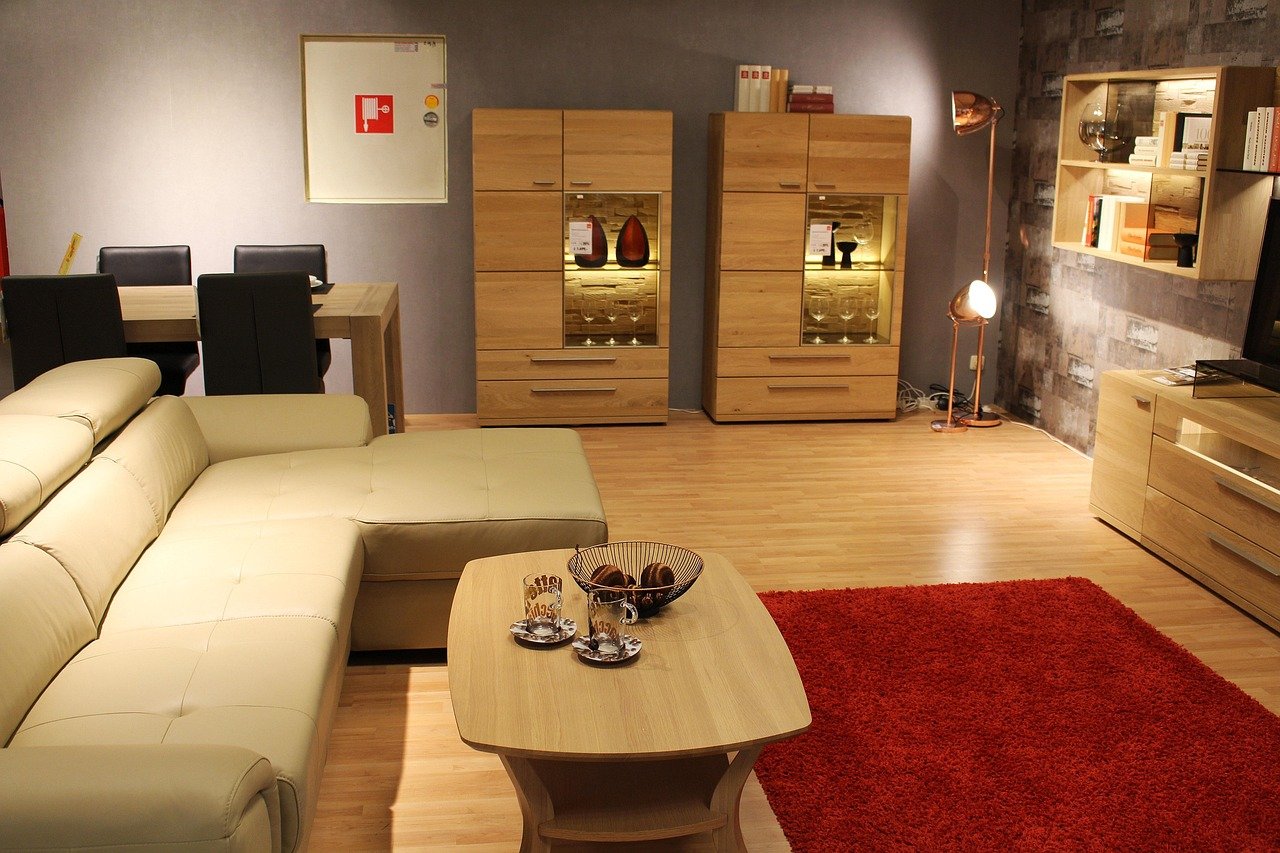You’ve painted the walls, agonized over the perfect sofa, and found a coffee table that’s just the right amount of quirky. But the room still feels… a little unfinished. It’s like a sentence without a period. Then, you unroll the right rug.
Suddenly, everything clicks. The furniture settles into a conversation, the room feels grounded, and a new layer of cozy comfort invites you to kick off your shoes. This is the magic of choosing the right foundation. A rug isn’t just a floor covering; it’s the fifth wall of your living room, anchoring its acoustics, comfort, and, most importantly, its style.
But with a dizzying array of sizes, materials, and patterns, how do you choose? This guide is here to demystify the process. By the end, you’ll be equipped with the principles of size, material, and style to confidently select the perfect stylish rugs for living room comfort and design that transforms your space from a collection of furniture into a cohesive sanctuary.
The Foundation: Mastering Rug Sizing and Placement
Let’s start with the most common stumbling block: size. A rug that’s too small is the number one design mistake, making even a beautiful room feel choppy and unsettled. Think of your rug as the visual glue that holds your seating area together.
The Golden Rules of Area Rug Placement
For most standard living rooms, follow these simple guidelines to ensure your rug looks intentional and luxurious:
- The “All Legs On” Rule: For a truly unified and high-end look, choose a rug large enough that all your main furniture pieces—sofa, armchairs, and coffee table—can sit comfortably with all four (or two) legs on the rug. This creates a designated “zone” that feels expansive and intimate all at once.
- The “Front Legs On” Rule: This is the most versatile and popular minimum standard. If an “all legs on” rug isn’t in the budget or feasible, ensure at least the front legs of your sofa and chairs are on the rug. This still successfully anchors the furniture to the space, creating a connected look.
- Mind the Border: No matter which rule you follow, always leave a consistent border of exposed flooring around the rug—typically 12 to 18 inches. This “frame” of floor allows the rug to breathe and defines it as a distinct area within the larger room.
How to Choose the Right Size for Open-Plan Living Zones
Modern homes often feature open-concept layouts, where the living room flows into the dining area or kitchen. Here, your rug sizing guide becomes a powerful tool for defining space without building walls.
- Go Oversized: In an open floor plan, think big. An oversized area rug can be used to visually carve out your living room seating area. The rug should be large enough to contain the main furniture grouping, creating a clear “island” for conversation and relaxation.
- Avoid the “Floating Rug”: A small, postage-stamp rug isolated in the center of a vast space is a surefire way to make the area feel disconnected and insubstantial.
- Sectionals & L-Shapes: For a large sectional, the rug needs to be substantial. Ideally, the entire sectional should sit on the rug. If that’s not possible, ensure at least the front legs of the longer chaise portion are anchored.
Comfort Meets Durability: Decoding Rug Materials and Texture
Now that we’ve nailed the size, let’s talk about what you’ll be feeling underfoot. The material of your rug is the secret engine of both comfort and longevity. This is where your personal lifestyle—think kids, pets, and daily foot traffic—really comes into play.
Natural Fibers: The Best for Comfort and Longevity
For many, natural fibers represent the gold standard, offering a blend of luxury, comfort, and inherent performance.
- Wool: This is the undisputed champion for a reason. Wool is naturally durable, soft, resilient (it bounces back from furniture indentations), and even stain-resistant. It’s a fantastic insulator and provides unparalleled comfort underfoot, making it a top choice for a high-traffic living room where you still want a touch of luxury.
- Silk & Bamboo Silk: If you’re looking for a luxe sheen and incredibly fine detail in a pattern, silk is the answer. However, it’s delicate and best for low-traffic, formal living rooms. A great alternative is Bamboo Silk (often a viscose blend), which offers a similar shimmer at a more accessible price point and with slightly more durability.
- Jute & Hemp: Bring in beautiful, natural texture with these plant-based fibers. They are incredibly strong and add an organic, grounded feel to a space. They are often used in layered rug situations, placed under a softer, smaller wool or synthetic rug for a bohemian, textural effect.
Synthetic and Blends: Value and High-Traffic Performance
Don’t underestimate the power of modern synthetics! Today’s options are stylish, soft, and incredibly practical.
- Polyester & Nylon: These are the workhorses of the rug world. They are highly stain-resistant, incredibly durable, and often more affordable than their natural counterparts. Polyester, in particular, holds vibrant colors beautifully, making it a great choice for bold, patterned stylish rugs for living room designs.
- The Pile Debate: This is a key part of your rug materials guide. A low-pile rug (like a flatweave or short tufted rug) is easier to clean, makes vacuums glide effortlessly, and is ideal for high-traffic homes with kids and pets. A high-pile or shag rug is the ultimate in cozy, sink-your-toes-in comfort, perfect for creating a warm, inviting nest in a media room or bedroom, but it requires more diligent maintenance.
Styling Your Space: Color, Pattern, and Current Trends
Here’s the fun part—where your rug becomes the star of the show. Your choice of color and pattern sets the entire mood for the room and is a direct line to the latest living room decor trends.
Using Color and Pattern to Set the Mood
- The Safe & Serene Neutral: Beige, gray, ivory, and taupe rugs are endlessly versatile. They allow your other furniture and art to take center stage and can make a small room feel more open and airy. They are a timeless choice you’re unlikely to tire of.
- The Bold Focal Point: Can’t decide on a color scheme? Let your rug do the work! Choose a rug with a vibrant pattern or rich color, and then pull out one or two of its accent colors for your throw pillows, artwork, or accessories. This is a designer’s trick for creating a cohesive, curated look with ease.
- The Layered Look: For maximum texture and a collected, bohemian feel, don’t be afraid to layer. Place a smaller, more decorative rug (like a vintage Kilim or a plush sheepskin) on top of a larger, neutral natural fiber rug like jute.
The Current Trend Watch: Organic Shapes and Abstract Designs
What’s hot right now in the world of stylish rugs for living room design?
- Organic Shapes: Move over, strict rectangles and circles. The latest living room decor trends are all about soft, irregular shapes. Think kidney beans, amoebas, and free-form silhouettes. These rugs add an instant hit of modern, artistic flair and work beautifully to soften the hard lines of contemporary furniture.
- Abstract & Textured Patterns: Highly graphic, distressed, or abstract patterns are having a major moment. These designs are not only visually interesting but are also genius at hiding the everyday wear and tear of life, making them as practical as they are beautiful. Think tonal textures, painterly strokes, and geometrics that feel hand-drawn rather than perfectly precise.
Choosing the perfect rug might seem like a daunting decision, but by breaking it down into these three pillars—size, material, and style—it becomes an exciting and creative process. Remember, the right rug is the single most effective way to tie your entire living room together, injecting both comfort and design in one fell swoop.
So, grab your tape measure, assess your lifestyle, and don’t be afraid to let your personality shine through. Your perfect foundation is out there, ready to transform your house into a home you’ll love living in.
YOU MAY ALSO LIKE: Your Backyard Oasis or a Hidden Hazard? The Homeowner’s Unflinching Guide to Pool Safety

